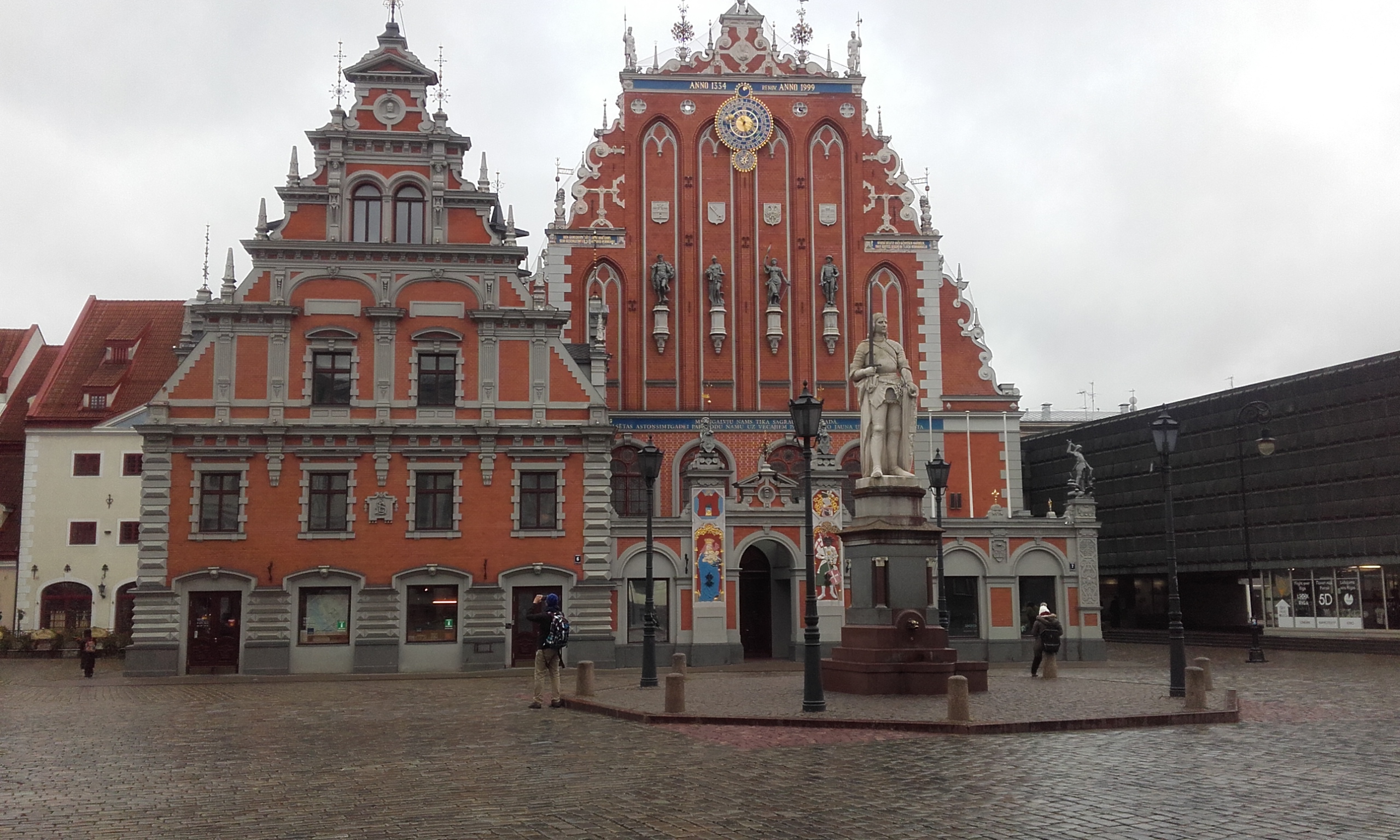Old Riga [Vecriga]


Hugging the East bank of the Daugava River is the attractive old town where it’s cobbled streets, churches, medieval and art nouveau architecture beckon.
Town Hall Square

Completely rebuilt since the Second World War, this attractive square is where you will find the Gothic House of Blackheads, also destroyed in WW2 and rebuilt in the late 1990’s. The Roland Statue, in the middle of the square, respresents a semi-fictional character from the 12th Century and is now considered to be the Patron Saint of Riga.
Livu Square


This attractive modern square built after WW2 is flanked by 18th Century buildings and cafes and bars.
Dome Square

This large square in the heart of Old Riga is flanked by many bars and cafes and is also the site of the 13th Century Dome Cathedral, the largest place of worship in the Baltics.

St Peter’s Church


This impressive brick church with it’s high tower has also been rebuilt, several times, most recently in the 1970’s.
Near the Church one may be surpised to see a statue of The Bremen Street Musicians, based on the Brothers Grimm fairy tale. Bremen is in fact a sister town to Riga and this was a gift to the city in 1990. The political twist being that the musicians in Riga are peering through an iron curtain.

Orthodox Cathedral [Pareizicigo Katedrale]

This Church, built by the Soviets in the late 19th Century, was also partially destroyed by them in the 20th Century but has now been restored. It is also known as The Nativity of Christ Cathedral.
St. Alexander Nevski Church
This is a 19th century Orthodox Church also known as The Yellow Church [for obvious reasons].

Art Nouveau Riga


There are some wonderful examples of Art Nouveau buildings on Elizabetes and Alberta Iela.
The Castle and Old City Wall
The 14th century castle has been destroyed on several occasions, most recently by fire in 2013.

There is not much left to see of Riga’s old walls but what remains is still interesting and is worth a wander. Some of the walls that do remain were built between the 13th and 16th Centuries.


Nearby is the 14th Century Powder Tower which no longer holds gunpowder and is now the home of the Latvian War Museum.

Parks and Monuments
The Freedom Monument in the city centre is the symbol of Latvian Independance and can be seen for miles around.

The Red Riflemen monument in the Old Town divides opinion. Some see it as a monument to old Communism while others see it as a tribute to Latvians who fought in WW1.

The Baltic Way monument may be small yet it is a memorial to an important event in modern Baltic history. In 1989 around 2 million people joined hands to form a 600km human chain from Tallin, through Riga, to Vilnius as a protest agiainst the soviet Union who were still in occupation.

Bastion Hill [Bastejkalns] Park


I love the fact that Riga has an attractive green belt that separates the old town from the new. This park is home to a memorial to people killed by Soviet police during disturbances in 1991.


Esplenade Park
Just beyond Bastion Park is Esplenade where you can also find the Orthodox Church and the Latvian Museum of Art.


National Library of Latvia

We did not make it inside but this modern building, on the left bank of the Daugava, is an impressive spectacle.
Academy of Sciences Building


This is nicknamed Stalin’s Birthday Cake. This Soviet era building, at a height of 65 metres, is one of the few buildings which still has the hammer and sickle insignia still visible high up on its facade which is rare as many of the symbols from most other Soviet buildings have been removed. You can pay to take in the view from the 17th floor.
Quick Links: